Yesterday I wrote about how “bad” technique can be part of a deliberate concept, and we’ve been looking at, well, the concept of concept in a little more detail with other examples.
“Shoot first, ask questions later”
Victor Burgin1
I was a little surprised to be encouraged to apply the term “concept” also retrospectively, having expected to be told that I must have a concept in place before I start shooting (I think my pre-conception here comes from having an education in more commercial photography, where you usually work to a brief). Talking to other photographers – both in the past and in my study cohort – I realise that a lot of people work in this way, developing their concept as they work, running with their gut feeling for a while and seeing what comes out of it, what might spark an idea or something they want to follow. This then usually turns into an iterative process.
The sheer volume of examples thrown at us this week has been something of a challenge, and I suspect I will come back to many of these photographers later as I narrow my search for a focus. They might well pop up here in future articles.
Regarding my own practice, over the last few years I have developed a more deliberate approach to shooting in some instances, although my methodology can often still be described as “select an interesting place to walk around, walk around it and take photos as something interesting catches your eye, then come home and edit the photographs”.
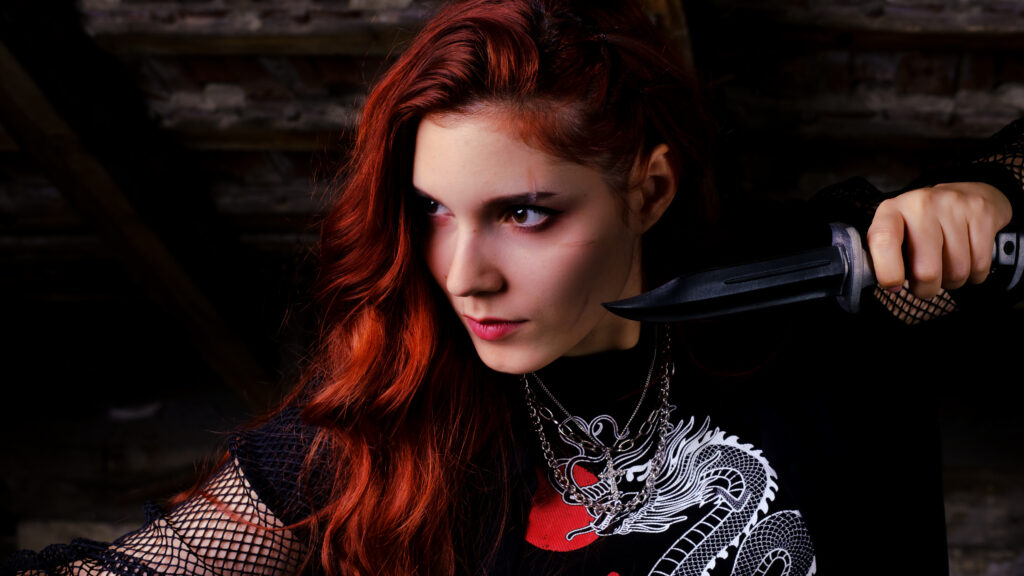
To date I haven’t done a lot of prior conceptual planning, and rarely have I had huge concepts for post processing, other than the decision to run with colour or black and white (sometimes clear ahead of the shoot, sometimes not). One notable exception to this non-planning on postprocessing was a shoot (example above) where I was looking for a more cinematic and slightly spacey look. It’s one of the rare occasions where I’ve taken a foray into split toning, opting for purple/yellow rather than the more usual teal/orange. Collaboration played a role here, as the shoot came about through conversation with a model on a LIK shoot who was frustrated that she didn’t get to wear a favoured cyperpunk outfit, so we planned a studio shoot to do so.
Other techniques I have employed deliberately include long exposure as a method to capture both movement and stillness, watching the traveller rushing quickly to their next destination, or, in the role of the commuter, noting the train speed past as a metaphor for that feeling that life is passing you by, but you are not moving.
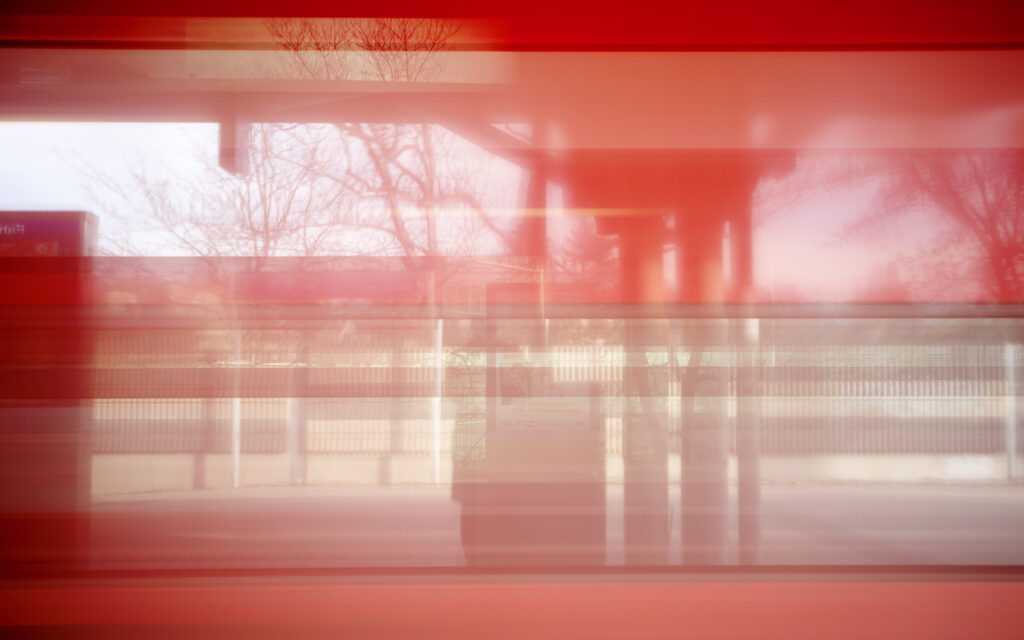
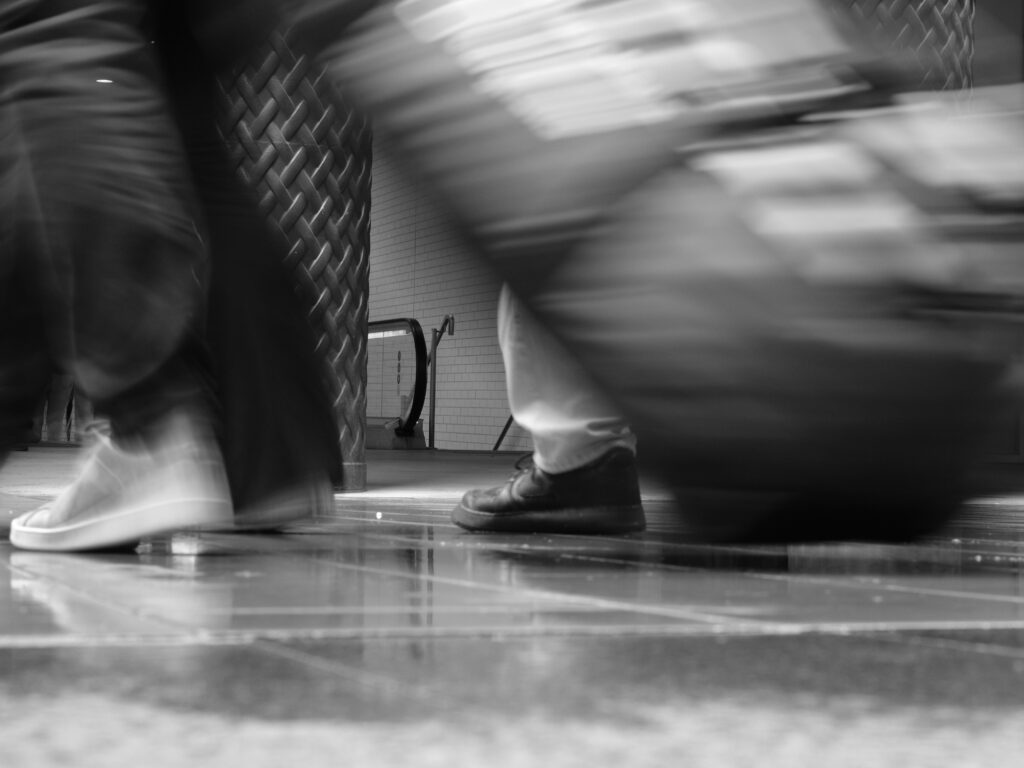
One last method I use is to be very cogniscent of the angle from which I am shooting. Sometimes this is purely for the purpose of aesthetics, e.g. forced perspective.

However in portraiture, I use deliberate positioning to illustrate power dynamics, e.g. shooting from above to put the photographer in the power position, or shooting from below to put the portraitee on a metaphorical pedestal (a technique I remember reading is used often to photograph CEOs and politicians, allowing them to look down at the viewer, although I haven’t looked into this assertion in any depth).

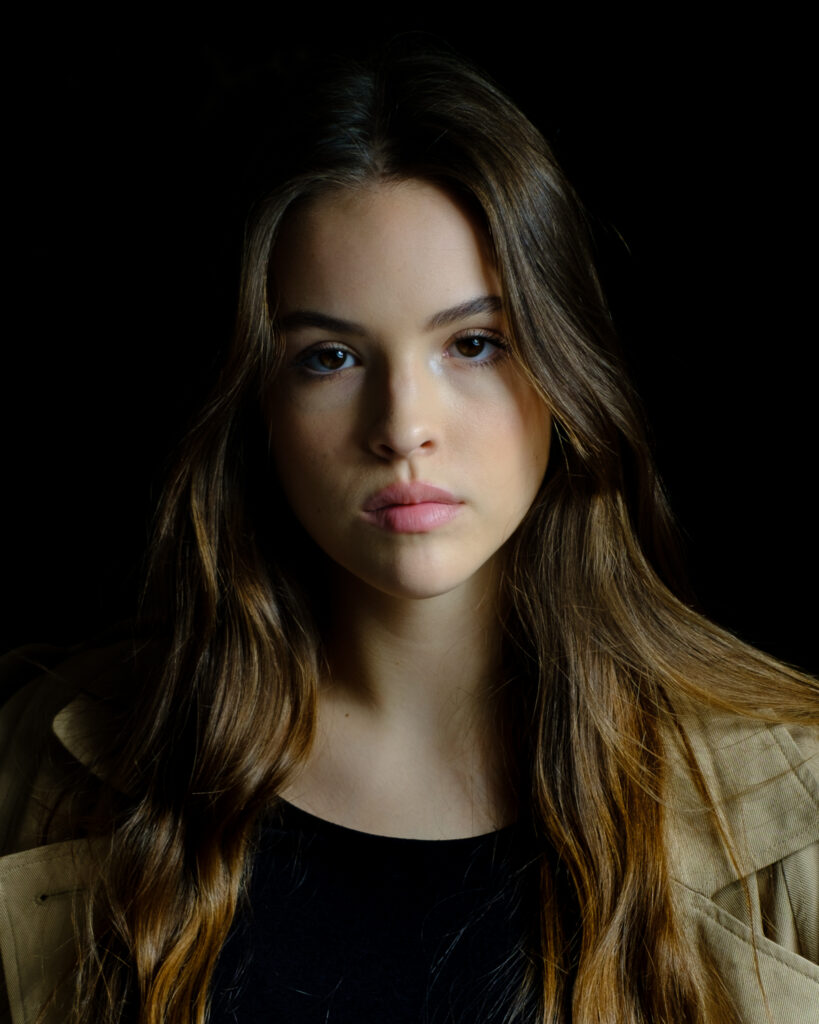
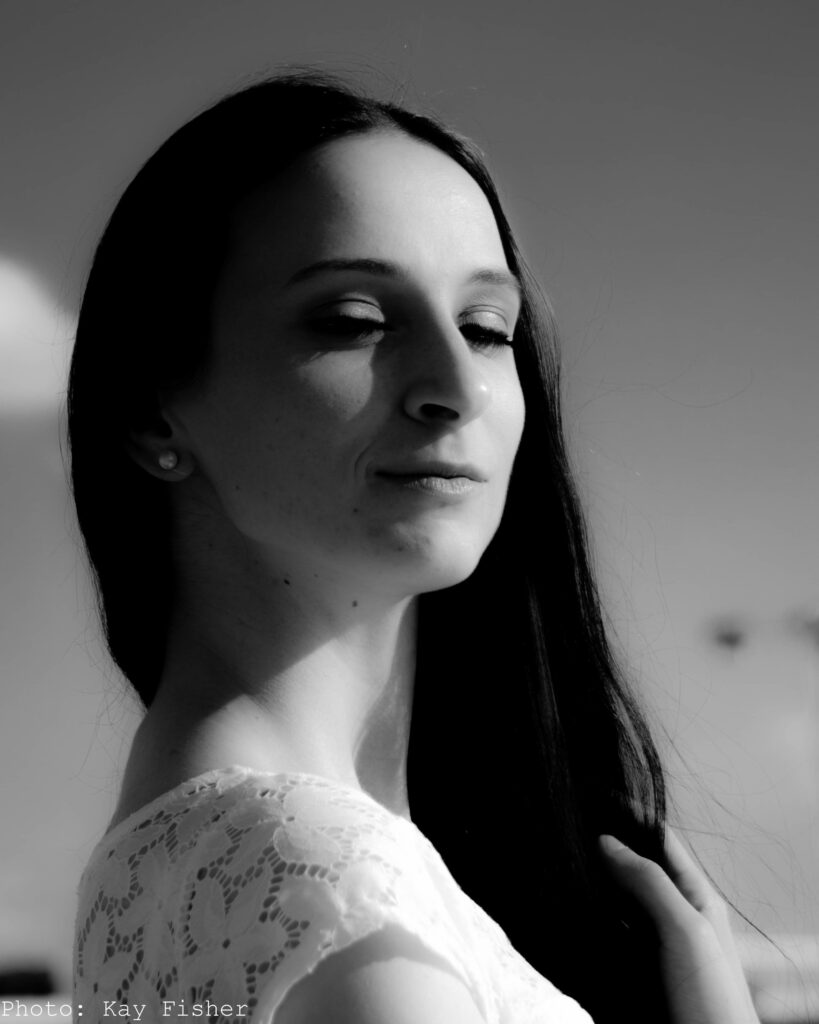
Very occasionally, a way of shooting can have an effect which was not intended at the time. In the picture below, I was experimenting with taking photos through the coloured lenses o my glasses. Although the glasses are in focus, and the couple in the background is not only out of focus but made unrecqgnisable due to overexposure, the overall effect is one of a furtive attempt to take a photograph, with the camera hidden behind the glasses. Perhaps the photographer is a private detective or a journalist out to expose an illicit affair, however the detective appears to be somewhat inexperienced!

Notes:
- I took this quote from the transcript of our recorded lecture this week, but I haven’t been able to locate a copy of the book this 1998 quote is credited to (CAMPANY, D. (2003). Art and Photography. London: Phaidon, p281 ). I did however find it reproduced on the website of that book’s editor in a brief essay titled “self-policing” (accessed 07.06.2024)
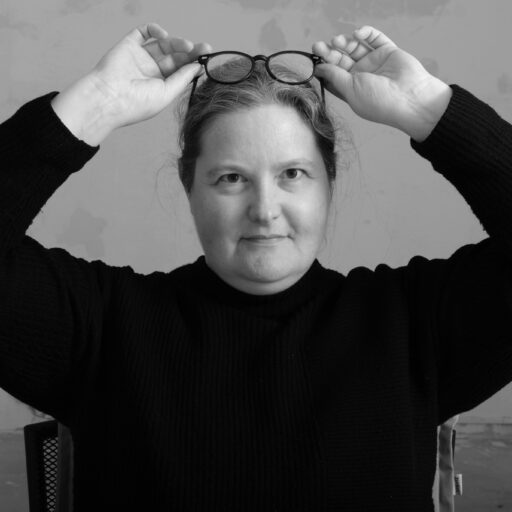
Leave a Reply